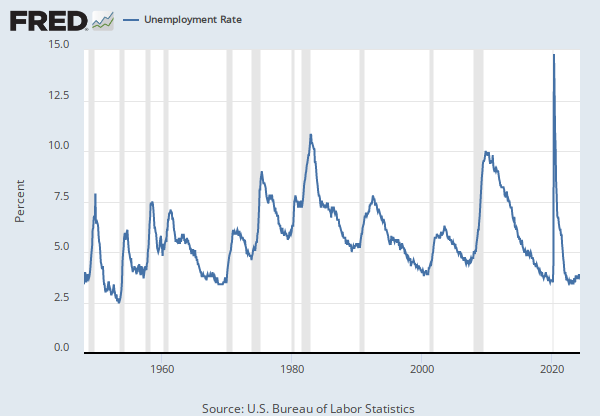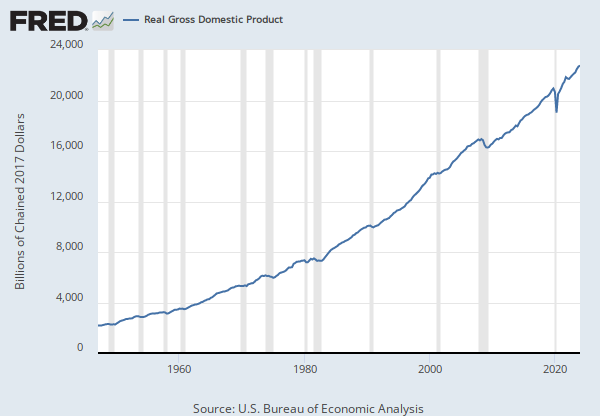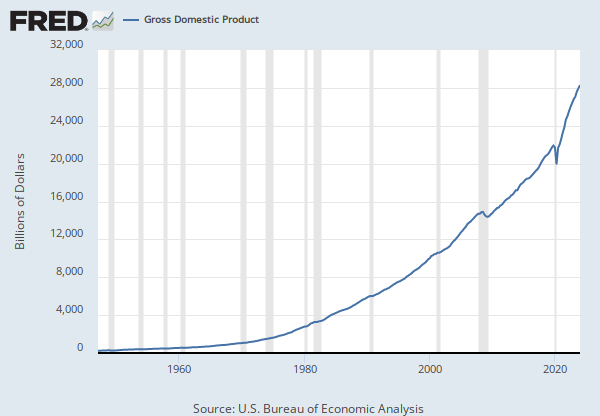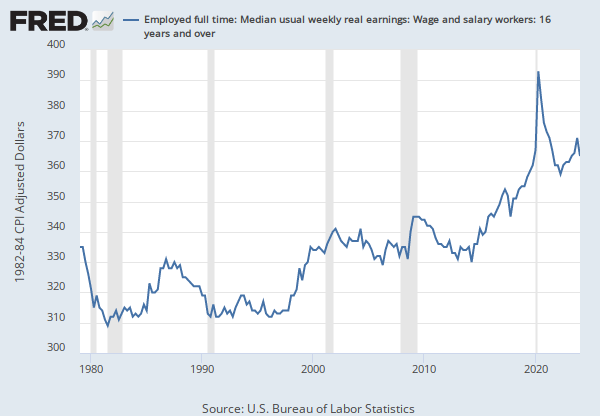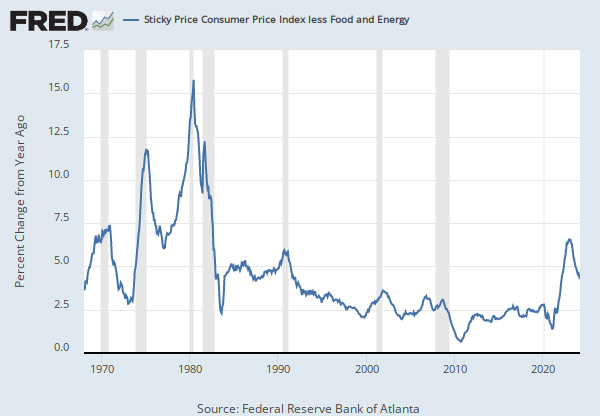Federal Reserve Economic Data: Your trusted data source since 1991
Data in this graph are copyrighted. Please review the copyright information in the series notes before sharing.
NOTES
Source: U.S. Bureau of Labor Statistics
Release: Employment Cost Index
Units: Index Dec 2005=100, Seasonally Adjusted
Frequency: Quarterly
Notes:
On April 26, 2006, The Employment Cost Index converted to the 2002 North American Industry Classification System (NAICS) and the 2000 Standard Occupational Classification System (SOC). In addition, several computational changes were introduced, including rebasing all series to December 2005=100 from June 1989=100, the introduction of new employment weights and seasonal adjustment factors.
For more detailed information on NAICS and SOC, including background and definitions, please see the Bureau of Labor Statistics (BLS) websites: https://www.bls.gov/bls/naics.htm and http://www.bls.gov/soc/home.htm.
Suggested Citation:
U.S. Bureau of Labor Statistics, Employment Cost Index: Wages and Salaries: Private Industry Workers [ECIWAG], retrieved from FRED, Federal Reserve Bank of St. Louis; https://fred.stlouisfed.org/series/ECIWAG, May 13, 2024.
Source: Organization for Economic Co-operation and Development
Release: Main Economic Indicators
Units: Index 2015=100, Seasonally Adjusted
Frequency: Quarterly
Notes:
OECD Descriptor ID: ULQELP01
OECD unit ID: IDX
OECD country ID: USA
All OECD data should be cited as follows: OECD, "Main Economic Indicators - complete database", Main Economic Indicators (database), https://dx.doi.org/10.1787/data-00052-en (Accessed on date) Copyright, 2016, OECD. Reprinted with permission
Suggested Citation:
Organization for Economic Co-operation and Development, Unit Labor Costs: Early Estimate of Quarterly Unit Labor Costs (ULC) Indicators: Labor Productivity: Total for United States [ULQELP01USQ661S], retrieved from FRED, Federal Reserve Bank of St. Louis; https://fred.stlouisfed.org/series/ULQELP01USQ661S, May 13, 2024.
Source: U.S. Bureau of Labor Statistics
Release: Consumer Price Index
Units: Index 1982-1984=100, Seasonally Adjusted
Frequency: Monthly
Notes:
The Consumer Price Index for All Urban Consumers: All Items (CPIAUCSL) is a price index of a basket of goods and services paid by urban consumers. Percent changes in the price index measure the inflation rate between any two time periods. The most common inflation metric is the percent change from one year ago. It can also represent the buying habits of urban consumers. This particular index includes roughly 88 percent of the total population, accounting for wage earners, clerical workers, technical workers, self-employed, short-term workers, unemployed, retirees, and those not in the labor force.
The CPIs are based on prices for food, clothing, shelter, and fuels; transportation fares; service fees (e.g., water and sewer service); and sales taxes. Prices are collected monthly from about 4,000 housing units and approximately 26,000 retail establishments across 87 urban areas. To calculate the index, price changes are averaged with weights representing their importance in the spending of the particular group. The index measures price changes (as a percent change) from a predetermined reference date. In addition to the original unadjusted index distributed, the Bureau of Labor Statistics also releases a seasonally adjusted index. The unadjusted series reflects all factors that may influence a change in prices. However, it can be very useful to look at the seasonally adjusted CPI, which removes the effects of seasonal changes, such as weather, school year, production cycles, and holidays.
The CPI can be used to recognize periods of inflation and deflation. Significant increases in the CPI within a short time frame might indicate a period of inflation, and significant decreases in CPI within a short time frame might indicate a period of deflation. However, because the CPI includes volatile food and oil prices, it might not be a reliable measure of inflationary and deflationary periods. For a more accurate detection, the core CPI (CPILFESL) is often used. When using the CPI, please note that it is not applicable to all consumers and should not be used to determine relative living costs. Additionally, the CPI is a statistical measure vulnerable to sampling error since it is based on a sample of prices and not the complete average.
For more information on the consumer price indexes, see:
Bureau of Economic Analysis. "CPI Detailed Report." 2013.
Handbook of Methods
Understanding the CPI: Frequently Asked Questions
Suggested Citation:
U.S. Bureau of Labor Statistics, Consumer Price Index for All Urban Consumers: All Items in U.S. City Average [CPIAUCSL], retrieved from FRED, Federal Reserve Bank of St. Louis; https://fred.stlouisfed.org/series/CPIAUCSL, May 13, 2024.
RELEASE TABLES
RELATED DATA AND CONTENT
Data Suggestions Based On Your Search
Content Suggestions
Other Formats
Unit Labor Costs: Early Estimate of Quarterly Unit Labor Costs (ULC) Indicators: Labor Productivity: Total for United States
Growth rate previous period, Quarterly, Seasonally Adjusted Growth rate same period previous year, Quarterly, Seasonally AdjustedConsumer Price Index for All Urban Consumers: All Items in U.S. City Average
Monthly, Not Seasonally Adjusted Semiannual, Not Seasonally Adjusted






